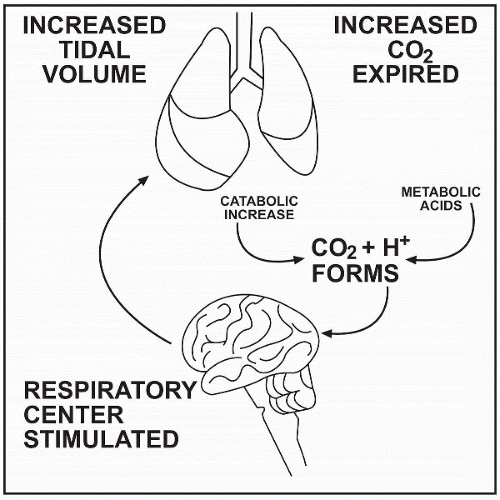Respiratory Regulation
QUICK LOOK AT THE CHAPTER AHEAD
The respiratory system provides a quick response to an acid-base imbalance through control of the partial pressure of carbon dioxide (PaCO2) in the arterial blood. In this chapter we examine the effects of respiratory regulation in an acid-base imbalance and how it controls acid through hyper- and hypoventilation.
The respiratory system provides a quick response to an acid-base imbalance through control of the partial pressure of carbon dioxide (PaCO2) in the arterial blood. When levels are elevated, CO2 is a potent stimulus for ventilation. Carried by the red blood cell, carbon dioxide readily diffuses across the blood-brain barrier, reacting with H2O to form H2CO3, which in turn splits into HCO3 and H+.
It is H+ that is responsible for stimulating the respiratory drive. Increased amounts of H+ cause an increase in respirations, and a decreased amount of H+ results in decreased respirations. As ventilation increases CO2 is blown off, leaving a decreased amount of carbon dioxide available to bond with H2O. If acid is required for balancing the pH, a decreased respiratory rate helps to retain CO2.
Stay updated, free articles. Join our Telegram channel

Full access? Get Clinical Tree




